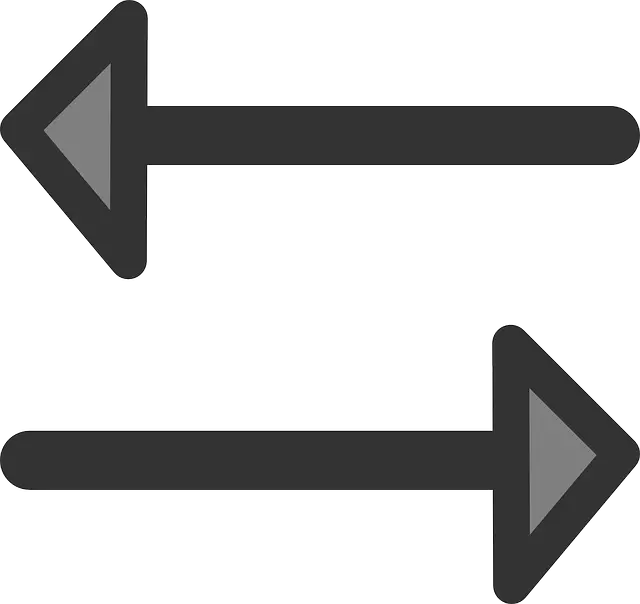Below, we discuss sustainable swaps.
We outline what they are, list some of the simplest swaps that some people might consider making, and provide other potentially useful information on swaps.
Firstly, What Are Sustainable Swaps?
As the name suggest, making a sustainable swap involves swapping a less sustainable or less eco friendly thing (like an item, product, service, activity, or even lifestyle), for a more sustainable or eco friendly thing.
Some common sustainable swaps might help reduce waste, or reduce environmental impact in some way.
Living a more sustainable lifestyle might be a similar concept to making sustainable swaps.
A List Of 12 Simple Sustainable Swaps
Some of the easiest/simplest sustainable swaps might involve swapping:
1. A Single Use Shopping Bag For A Reusable Shopping Bag
Single use bags might primarily be plastic, whilst reusable bags can be made of cotton, jute, and other materials
We’ve put together a separate guide comparing the sustainability of single use bags to reusable bags
2. A Single Use Beverage Bottle/Cup For A Reusable Bottle/Cup
Such as water bottles, or coffee cups/mugs
We’ve put together a separate guide comparing the sustainability of single use bottles to reusable bottles
3. Single Use Plates & Utensils For Reusable Plates & Utensils
Such as plates, knives, forks, spoons, straws, and so on
We’ve put together a separate guide comparing the sustainability of single use straws to reusable straws
4. Single Use Paper Towels For Reusable & Washable Cloths
5. Single Use Food Wrap For A Reusable & Washable Food Storage Container Or Food Carrier
6. Other Single Use Products, For Reusable Products
Such as personal grooming, personal hygiene, and other types of products (where safe and practical to do so)
7. Throwing Out Food At Home, For Storing & Eating It Later As Leftovers (where safe and practical to do so)
8. Driving To The Shop, For Walking Or Riding To The Shop
For smaller loads of shopping, and where the shops are reasonably close and practical to walk/ride to
Riding might be on a pedal bike, or another similar form of transport
9. Using An Electric Clothes Dryer, For Drying Clothes On A Clothes Airer Rack
10. Selling Or Donating Personal Items, Instead Of Immediately Disposing Of Them (where practical to do so)
Such as clothes, furniture, and other items
11. Some Resource Intensive Activities, For Some Less Resource Intensive Activities
Like going for a hike outdoors in nature, or going to the beach on some weekends, instead of an activity that is more resource intensive, or involves commercial consumption
12. Some Unnecessary Consumption, For Some More Essential Consumption
Cutting total consumption, and also the rate of consumption, where the type of consumption isn’t as essential/necessary
Examples of this might be cutting down on unnecessary impulse shopping purchases, or ‘order to your door’ or ‘delivery’ fast food services where food can be bulk purchased and/or prepared at home instead
What Might Be Some Sustainable Swaps Specifically For The Home?
Some sustainable swaps specifically for the home might be swapping:
– Specifically less energy efficient heating and cooling systems and/or practices, for more energy efficient heating and cooling systems and/or practices
– Specifically less energy efficient lighting for more energy efficient lighting
– Longer showers for shorter showers (where practical to do so)
– Full toilet flushes for half toilet flushes (where hygienic/safe, and practical to do so)
– Less water efficient outdoor water practices, for more water efficient outdoor water practices
With hoses, sprinklers, pools, and so on
– Practices around the home that waste energy or water, for practices that help save energy and water
– Less energy efficient or water efficient appliances for more energy efficient or water efficient appliances around the home (where practical to do so)
The following guides contain more information about sustainability in the home:
Tips To Be More Sustainable In The Home
What Uses The Most Electricity In The Home
What Uses The Most Water In The Home
What Might Be Some Sustainable Swaps Specifically For The Kitchen?
Some sustainable swaps specifically for the kitchen might be swapping:
– Single use plates and utensils, for reusable and washable plates and utensils
– Single use paper towels, for reusable and washable cloths
We’ve put together a separate guide that contains more information about sustainability in kitchen.
What Might Be Some Sustainable Swaps Specifically To Save Money?
Some sustainable swaps may help save money, but, others may either be cost neutral, or cost more money.
There’s also the time span to consider for a swap – the initial purchase price, and also the cost of something over it’s lifespan (such as a vehicle).
A few examples of swaps that might help save money upfront might be swapping:
– Driving to the shop for walking (where practical)
There’s a clear financial saving on fuel
– Using an electric clothes dryer appliance to dry clothes, for a clothes airer rack
There’s a clear financial saving on the cost of a clothes airer rack compared to an electric clothes dryer appliance
There’s also a cost saving on electricity
What Might Be Some Sustainable Swaps Specifically For Students?
Some sustainable swaps specifically for students might be swapping:
– Bringing lunch in single use food wrap, for bringing lunch in a reusable and washable food carrier or container (where hygienic and safe to do so)
– Printing some files/documents, for storing them online or on a hard drive instead (where allowed, and practical)
– Attending some classes in person, for online classes (where allowed, and practical)
In person classes require transport, lighting, and other resources
We’ve put together a separate guide that contains more information about sustainability for students.
Sources
1. Various ‘Better Meets Reality’ guides
','' ); } ?>